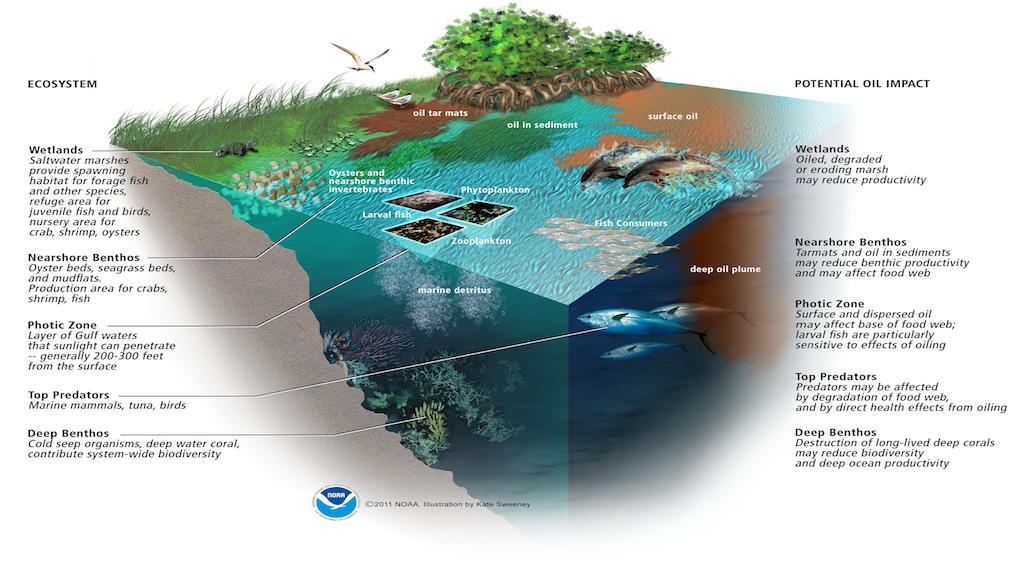May 12, 2016
In a recent paper published in Deep Sea Research II, ECOGIG researchers provide an overview of the distribution, fate and impacts of hydrocarbons released due to the Deepwater Horizon accident and offer suggestions for future research to push the field of oil spill response research forward.
The Gulf of Mexico ecosystem is a hotspot for biological diversity and supports a number of industries, from tourism to fishery production to oil and gas exploration, that serve as the economic backbone of Gulf coast states. The Gulf is a natural hydrocarbon basin, rich with stores of oil and gas (hydrocarbons) that lie in reservoirs deep beneath the seafloor. The natural seepage of hydrocarbons across the Gulf system is extensive and the system's biological components experience frequent hydrocarbon exposure.
In contrast to natural seepage, variable over space and time, the 2010 Deepwater Horizon accident (aka Macondo oil well blowout), represented an intense, focused infusion of hydrocarbons to the Gulf's deepwaters. The blowout drove rapid shifts in microbial populations and activity, revealed unexpected phenomena, such as deepwater hydrocarbon plumes and marine “oil snow” sedimentation, and impacted the Gulf's pelagic and benthic ecosystems.
Understanding the distribution and fate of the oil from this accident was limited by the physical oceanographic models available at the time lacking an ability to accurately predict the physical movement of water in the Gulf. In the past six years, much has been learned about the physical oceanography of the Gulf, providing knowledge that will improve the ability to predict the movement of water and the hydrocarbons they carry in future blowout scenarios. Similarly, much has been learned about the processing and fate of hydrocarbons.
The full text of this paper "The Gulf of Mexico ecosystem, six years after the Macondo well blowout" is available here.


















 back to top
back to top